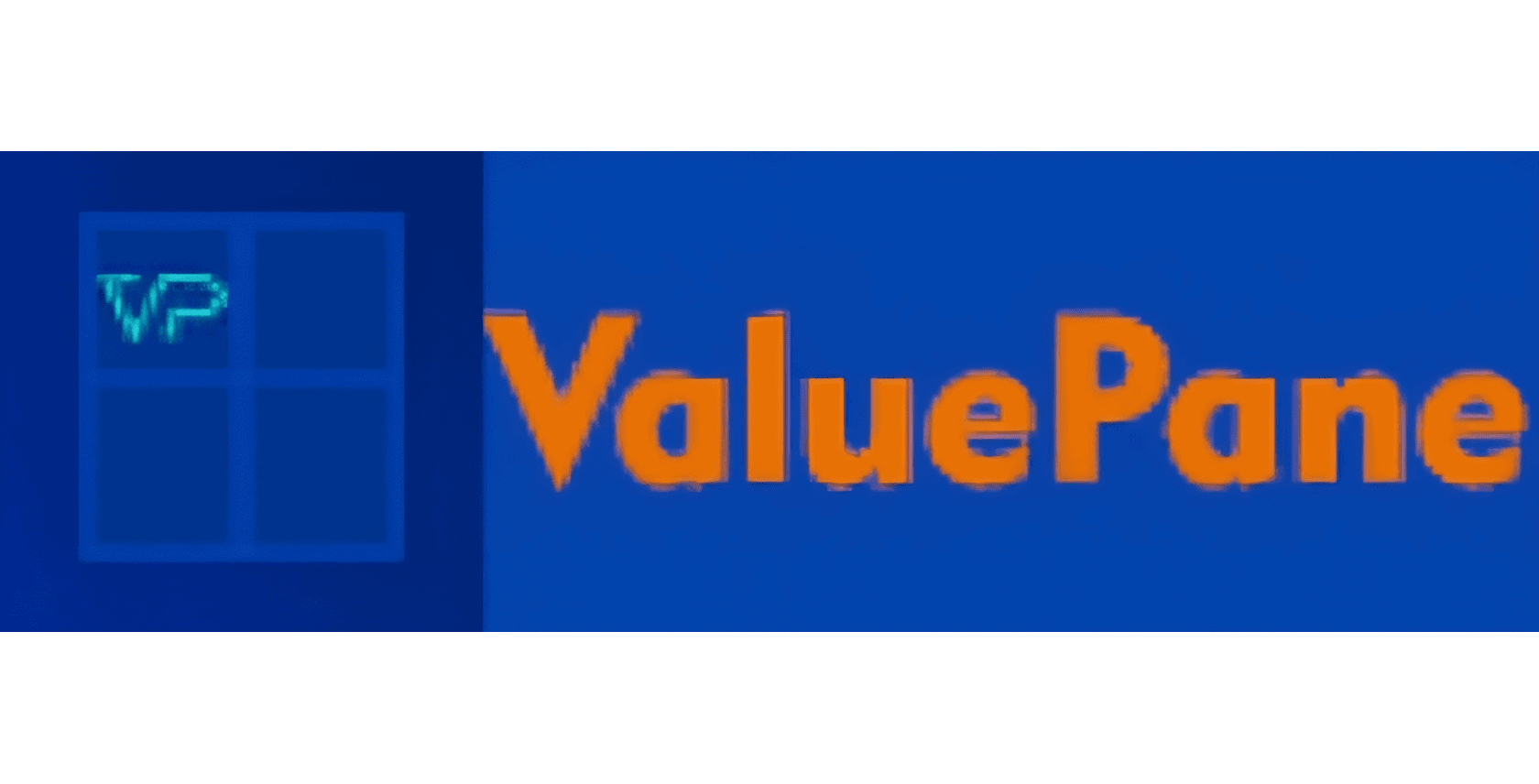Have you ever wondered what it takes to be a successful blogger?
Blogging is a rewarding and fulfilling activity that can help you express your creativity, share your knowledge, connect with your audience, and even earn money.
But blogging is not as easy as it may seem.
There are many blogging challenges that you need to know before you start or continue your blogging journey. There are also many statistical insights that you need to know to understand the blogging industry better.
In this blog post, I will share with you some of the facts about blogging and statistics that make or break bloggers, and along with it there will many beneficial blogging tips.

I am hopeful, that by the end of this blog post you will have a better understanding of the realities and opportunities of blogging. You will also learn some practical and actionable ways to overcome the harsh truths and apply the bloggers tips to improve your blogging strategy.
But before we begin let’s get a couple of points into perspective.
- Blogging is not a walk in the park. It’s not a hobby that you can do whenever you feel like it. It’s not a magic wand that can solve all your problems.
- Like any other work, blogging is a serious business that requires a lot of effort, time, patience, skill, knowledge, passion, and dedication.
If you want to be a successful blogger, you need to face some true facts about blogging. You need to be aware of the challenges and difficulties that come with blogging. You also need to be prepared to deal with them.
Now, lets dive in!
Table of Contents
Fact #1: Blogging is a lot of work
You may think that blogging is just writing a few words and hitting publish, but there is much more to it than that.
Blogging requires a lot of time, effort, research, planning, editing, promotion, and maintenance.
According to a survey by Orbit Media Studios, the average blogger spends about 4 hours writing a single blog post. This is excluding the time spent on brainstorming topics, finding keywords, creating images, optimizing SEO, engaging with readers, updating old posts, and so on.
Blogging also requires a lot of skills and knowledge. You need to know how to write well, how to use various tools and platforms, how to market your blog, how to monetize your blog, how to analyze your blog performance, and so on.
Blogging is not a one-time thing. It’s a continuous process that requires constant improvement and innovation. You need to keep up with the latest trends and changes in the blogging industry. You need to keep learning and growing as a blogger.
Statistic #1: Blogging pays off (Source: WPDeveloper)
Despite the amount of work involved, blogging can also bring you many benefits.
Blogging can help you establish your authority, build trust, generate leads, increase traffic, grow your email list, and earn revenue.
According to a report by HubSpot, marketers who prioritize blogging are 13 times more likely to see positive ROI. Moreover, bloggers who publish more frequently tend to get more traffic and leads than those who publish less often.
Bloggers Tip #1: To make your blogging journey worthwhile and successful, it’s important to set clear goals and consistently measure your progress such as:
- Define Objectives: Set clear blogging goals and objectives.
- Content Strategy: Develop a plan aligned with your goals.
- Monitor Metrics: Track key performance indicators (KPIs).
- Regular Assessments: Review progress at intervals.
- Adapt and Refine: Adjust strategy based on insights.
- Consistency: Maintain a regular posting schedule.
- Patience and Persistence: Success takes time and effort.
- Engage with Audience: Encourage feedback and discussions.
- Stay Updated: Keep learning about trends and tools.
- Celebrate Milestones: Acknowledge and celebrate achievements.
- Adjust Goals: Be flexible and adjust objectives as needed.
Fact #2: Blogging is not a get-rich-quick scheme
You may have heard of some bloggers who make millions of dollars from their blogs. You may have seen some bloggers who flaunt their lavish lifestyles and exotic travels on their blogs. You may have dreamed of becoming one of them.
But blogging is not a get-rich-quick scheme. It’s not a lottery that can make you rich overnight. It’s not a shortcut that can bypass the hard work and the learning curve.
Blogging is a business that requires a lot of investment and expenses. You need to pay for hosting, domain name, tools, plugins, themes, courses, ads, and so on. You also need to invest your time, energy, and money into creating quality content, promoting your blog, building relationships, and growing your audience.
Blogging is also a competitive and saturated market. There are millions of blogs on the internet, covering almost every topic imaginable. You need to find a way to stand out from the crowd and attract attention. You also need to deal with the ever-changing algorithms and policies of search engines and social media platforms.
Statistic #2: Blogging influences 6% of eCommerce sales (12% for businesses that blog regularly) (Source: OptinMonster)
Blogging can be a powerful way to generate income from your blog. You can monetize your blog with various methods, such as ads, affiliates, products, or services.
According to OptinMonster, blogging influences 6% of eCommerce sales worldwide. This means that 6 out of every 100 online purchases are influenced by blog content. For businesses that blog regularly (at least once per week), this number jumps to 12%.
This shows that blogging can have a significant impact on your revenue potential. By creating valuable and relevant content for your audience, you can build trust and loyalty with them. You can also persuade them to take action and buy from you.
Bloggers Tip #2: To build a sustainable income from your blog, it’s important to diversify your monetization strategy such as:
- Multiple Streams: Explore diverse monetization methods (ads, affiliates, products, services, etc.).
- Audience Understanding: Tailor strategies to match audience preferences and needs.
- Quality Alignment: Ensure promoted products align with your niche and provide value.
- Transparency: Clearly disclose affiliations, sponsored content, and partnerships.
- Authentic Integration: Integrate monetization naturally within valuable content.
- Loyalty Building: Foster long-term relationships with your audience.
- Industry Awareness: Stay informed about industry trends and changes.
- Patience and Persistence: Understand that building income takes time.
- Testing and Optimization: Experiment with methods and adjust based on results.
- Value First: Prioritize delivering value to your readers above all else.
Fact #3: Blogging requires a lot of time and patience
You may have seen some bloggers who claim that they can create a successful blog in a matter of weeks or months. You may have been tempted to follow their advice and expect quick results.
But blogging requires a lot of time and patience. It’s not a sprint that you can finish in a short time. It’s a marathon that you need to run for a long time.
Even with AI blogging requires time and patience for many reasons. You need time and patience to:
- Find your niche and target audience
- Create quality and valuable content
- Optimize your SEO and rank higher on Google
- Promote your blog and grow your traffic
- Engage with your readers and build relationships
- Monetize your blog and earn revenue
- Learn from your mistakes and failures
- Experiment with new ideas and formats
- Adapt to the changing trends and demands of the blogging industry
Statistic #3: The average blog post length is 1,416 words in 2023 (Source: Ahrefs)
Blogging can be a rewarding way to grow your online presence and authority. You can use your blog to showcase your expertise, share your knowledge, solve problems, and educate your audience.
But how long should your blog posts be?
According to Ahrefs, the average blog post length in 2023 is 1,416 words. This means that the average blogger writes about 1,400 words for each blog post.
However, this does not mean that you should write the same length for every blog post. The optimal length for your blog post depends on many factors, such as:
- Your niche and topic
- Your audience and their preferences
- Your goal and purpose
- Your style and voice
- Your competition and ranking
Bloggers Tip #3: To make the most of your time and effort, it’s crucial to optimize your blog post length for engagement such as:
- Prioritize Quality over Quantity
- Create Comprehensive and In-depth Content
- Use an Engaging Writing Style
- Enhance with Visuals (Images, Infographics, Videos)
- Address Reader Intent and Needs
- Analyze Performance with Data
- Experiment and Adapt Content Length
- Ensure Mobile-Friendly Design
Fact #4: Blogging is not as easy as it looks
You may have read some blogs that look amazing and effortless. You may have admired their design, layout, content, images, videos, and other elements. You may have wondered how they do it.
But blogging is not as easy as it looks. It’s not a matter of copying or following someone else’s style or formula. It’s not a matter of using some fancy tools or plugins.
Blogging is a creative process that requires a lot of skill, talent, knowledge, passion, and originality.
Blogging is not as easy as it looks because:
- You need to find your own voice and style that reflects who you are and what you stand for.
- You need to create unique and valuable content that stands out from the crowd and attracts attention.
- You need to use various tools and platforms that suit your needs and goals.
- You need to optimize your design, layout, content, images, videos, and other elements for user experience and SEO.
- You need to test different ideas and formats to see what works best for you.
Statistic #4: Articles that include visuals get 94% more views than those without (Source: Jeff Bullas)
Blogging can be a fun and rewarding way to express your creativity and share your passion. You can use your blog to showcase your talent, personality, opinions, and stories.
But how do you make your blog posts more appealing and attractive?
According to Jeff Bullas, articles that include visuals get 94% more views than those without. This means that adding images, videos, charts, graphs, infographics, or other visuals to your blog posts can boost your traffic and engagement.
Visuals are a great way to enhance your blog posts because they can:
- Grab the reader’s attention and interest
- Break up the text and make it easier to read
- Illustrate your points and support your arguments
- Simplify complex or technical information
- Stimulate emotions and feelings
- Increase retention and recall
Bloggers Tip #4: To enhance your blogging efforts and captivate your audience, leverage visual content effectively such as:
- Engaging Visuals: Include images, infographics, videos, and more.
- Visual Storytelling: Illustrate concepts and simplify ideas visually.
- Catchy Thumbnails: Create attention-grabbing featured images.
- Variety: Experiment with different types of visuals.
- Originality: Design unique visuals aligned with your brand.
- Mobile Optimization: Ensure visuals are mobile-friendly.
- Accessibility: Provide alt text for inclusive visuals.
- Consistent Aesthetics: Maintain a unified visual theme.
- Interactive Elements: Add quizzes, polls, and interactive content.
- Strategic Integration: Use visuals to enhance your message.
- Testing and Analysis: Monitor engagement metrics.
- Sourcing Ethics: Respect copyright and use reliable sources.
Fact #5: Blogging is not just about writing
You may have a passion for writing and a talent for words. You may have a lot of ideas and stories to share with the world. You may have a knack for creating engaging and captivating content.
But blogging is not just about writing. It’s not a matter of putting words on a page or a screen. It’s not a matter of expressing yourself or sharing your thoughts.
Blogging is also about:
- Reading and researching
- Planning and outlining
- Editing and proofreading
- Formatting and designing
- Optimizing and testing
- Promoting and marketing
- Analyzing and measuring
- Learning and improving
Statistic #5: The optimal length for a blog post is in the 2,250 – 2,500 word count range (Source: HubSpot)
Blogging can be a fun and rewarding way to express your creativity and share your passion. You can use your blog to showcase your talent, personality, opinions, and stories.
But how long should your blog posts be?
According to HubSpot, the optimal length for a blog post is in the 2,250 – 2,500 word count range. This means that the ideal blog post should have about 2,300 words.
Keep these considerations in mind about your content:
- Niche and Relevance: Tailor your post length to your niche and the depth of information required to address your readers’ needs.
- Engagement and Attention Span: Consider your audience’s preferences and their typical attention span for online content.
- Purpose and Goals: Define your blog post’s purpose—whether it’s to inform, entertain, educate, or inspire—and adjust the length accordingly.
- Voice and Style: Your unique writing style and tone may influence the ideal length for your posts.
- Competition and Impact: Analyze your competitors and strive to provide more comprehensive and engaging content.
Bloggers Tip #5: To create engaging and impactful content, focus on mastering the art of effective writing and formatting such as:
- Clear Structure: Organize with introduction, body, and conclusion.
- Engaging Headlines: Craft attention-grabbing titles.
- Concise Sentences: Keep sentences clear and concise.
- Active Voice: Use active voice for dynamic writing.
- Powerful Opening: Begin with a compelling hook.
- Descriptive Language: Employ vivid imagery and descriptions.
- Data and Examples: Include stats and real-world examples.
- Formatting Techniques: Use lists and short paragraphs.
- Visual Breaks: Add images and visuals for readability.
- Conversational Tone: Write in a relatable tone.
- Transitions: Smoothly connect paragraphs and ideas.
- Call to Action (CTA): End with a compelling CTA.
- Editing and Proofreading: Check for errors and clarity.
- Optimal Length: Aim for the ideal word count.
- Audience-Centric: Address readers’ needs and questions.
- Authentic Voice: Develop a unique writing style.

Fact #6: Blogging is competitive and saturated
You may have a passion for blogging and a talent for creating content. You may have a lot of value and knowledge to offer to the world. You may have a unique voice and style that sets you apart from others.
But blogging is competitive and saturated. It’s not a matter of creating a blog and expecting people to find you. It’s not a matter of being good or even great at blogging.
Blogging is a competitive and saturated market because:
- There are millions of blogs on the internet, covering almost every topic imaginable.
- There are thousands of new blogs created every day, adding more noise and clutter to the online space.
- There are hundreds of other bloggers who are targeting the same niche, audience, keywords, and goals as you.
- There are dozens of other factors that affect your blog’s visibility and performance, such as SEO, social media, email marketing, user behavior, algorithms, policies, etc.
Statistic #6: 44% of bloggers publish new content between three to six times per month (Source: Orbit Media)
Blogging can be a fun and rewarding way to express your creativity and share your passion. You can use your blog to showcase your talent, personality, opinions, and stories.
But how often should you publish new content on your blog?
According to Orbit Media, 44% of bloggers publish new content between three to six times per month. This means that the average blogger publishes about once or twice per week.
Determine your blog posting frequency:
- Niche Relevance: Tailor your posting frequency to your niche’s demands and the need for staying relevant.
- Audience Engagement: Consider your audience’s preferences and how frequently they consume content.
- Content Goals: Align your posting frequency with your content goals—whether it’s to inform, entertain, educate, or inspire.
- Content Quality: Maintain a balance between consistent posting and ensuring the quality of each piece.
- Market Trends: Stay informed about industry trends and adjust your frequency to remain competitive.
Bloggers Tip #6: Enhancing the effectiveness of your blogging efforts is closely tied to how you engage with your audience with these practices:
- Opt for quality over quantity to ensure each post provides meaningful value.
- Regularly engage with your audience through comments and social media interactions.
- Monitor engagement metrics to gauge the impact of your posting frequency.
- Experiment with posting schedules and analyze the response to refine your approach.
- Utilize email newsletters to update readers about your latest posts and maintain connection.
- Aim for consistency but be willing to adapt based on your readers’ needs and preferences.
Fact #7: Blogging requires constant learning and improvement
You may have a passion for blogging and a talent for creating content. You may have a lot of skill and knowledge in your niche and topic. You may have a lot of experience and success in blogging.
But blogging requires constant learning and improvement. It’s not a matter of resting on your laurels or sticking to your comfort zone. It’s not a matter of repeating the same things or following the same formula.
Blogging requires constant learning and improvement because:
- The blogging industry is constantly changing and evolving. You need to keep up with the latest trends and developments in your niche and topic. You also need to keep up with the latest changes in SEO, social media, email marketing, user behavior, algorithms, policies, etc.
- The blogging market is constantly growing and expanding. You need to keep an eye on the new opportunities and challenges in your niche and topic. You also need to keep an eye on the new competitors and collaborators in your niche and topic.
- The blogging audience is constantly shifting and diversifying. You need to keep in touch with the needs and wants of your existing readers. You also need to keep in touch with the potential readers who may be interested in your niche and topic.
Statistic #7: The average reader spends 52 seconds reading a blog post (Source: Techjury)
Blogging can be a fun and rewarding way to express your creativity and share your passion. You can use your blog to showcase your talent, personality, opinions, and stories.
But how long do your readers spend on your blog posts?
According to NewsCred Insights, the average reader spends 52 seconds reading a blog post. This means that the average reader only skims through your content, rather than reading it in depth.
However short the attention span of the visitor keep optimizing your blog post based on:
- Content Relevance: Tailor your blog post length to the depth of information needed to address your topic effectively.
- Audience Consideration: Keep your target audience in mind and structure your content to meet their expectations.
- Content Objectives: Align your blog post length with your content goals—whether it’s to inform, entertain, educate, or inspire.
- Readable Structure: Break down complex ideas into digestible sections and use formatting elements for improved readability.
Bloggers Tip #7: You can also use some techniques to make your content more readable and appealing, such as:
- Write engaging headlines and introductions that capture the reader’s attention and curiosity.
- Use subheadings, bullet points, lists, tables, charts, images, videos, and other visuals to break up the text and enhance the content.
- Use keywords, phrases, questions, quotes, statistics, facts, examples, stories, anecdotes, metaphors, similes, analogies, humor, emotions, opinions, and other elements to spice up the content and add variety.
- Use transitions, connectors, summaries, conclusions, calls to action, and other elements to create a clear and coherent structure and flow for the content.
- Use short sentences, paragraphs, words, active voice, simple tense, direct speech, personal pronouns (you/we/I), contractions (don’t/can’t/it’s), positive tone (can/will/should), and other elements to create a simple and friendly style for the content.
Fact #8: Blogging can be lonely and isolating
You may have a passion for blogging and a talent for creating content. You may have a lot of friends and followers who support and appreciate your work. You may have a lot of opportunities and collaborations that enrich your blogging experience.
But blogging can also be lonely and isolating. It’s not a matter of being social or popular. It’s not a matter of having fun or being happy.
Blogging can be lonely and isolating because:
- You spend a lot of time alone, working on your blog, without any human interaction or feedback.
- You face a lot of challenges and difficulties, without any help or guidance.
- You deal with a lot of stress and pressure, without any relief or balance.
- You encounter a lot of negativity and criticism, without any support or encouragement.
Statistic #8: Internet users leave around 77 million comments per month on blog posts (Source: Ryan Robinson)
Blogging can be a fun and rewarding way to express your creativity and share your passion. You can use your blog to showcase your talent, personality, opinions, and stories.
But how do you connect with your readers and other bloggers?
According to WordPress, internet users leave around 77 million comments per month on blog posts. This means that there are millions of people who are interested in reading and engaging with blog content.
Comments are a great way to interact with your readers and other bloggers. They can help you:
- Build relationships and trust with your audience
- Get feedback and suggestions for your content
- Answer questions and solve problems for your readers
- Generate ideas and inspiration for your future content
- Increase traffic and engagement on your blog
- Boost your SEO and ranking on Google
Bloggers Tip #8: You can use some techniques to encourage more comments on your blog posts, such as:
- Ask questions at the end of your blog post that invite the reader to share their thoughts, opinions, experiences, or suggestions.
- Respond to the comments that you receive on your blog post in a timely and polite manner. Thank them for their feedback, answer their questions, address their concerns, or ask them follow-up questions.
- Comment on other blogs that are related to your niche and topic. Compliment them on their content, add value to their discussion, or ask them relevant questions.
- Join online communities that are related to your niche and topic. Participate in the conversations, share your content, or ask for feedback.
- Use social media platforms to promote your blog post and invite people to comment on it. Share snippets of your content, ask questions, or create polls.
Fact #9: Blogging can affect your mental health and well-being
You may have a passion for blogging and a talent for creating content. You may have a lot of satisfaction and joy from blogging. You may have a lot of positive feedback and recognition from your readers and peers.
But blogging can also affect your mental health and well-being. It’s not a matter of being happy or sad. It’s not a matter of being healthy or sick.
Blogging can affect your mental health and well-being because:
- You may experience stress and anxiety from the pressure and expectations of blogging. You may worry about meeting deadlines, creating quality content, growing your traffic, earning revenue, etc.
- You may experience burnout and fatigue from the workload and demands of blogging. You may feel exhausted, overwhelmed, or bored from blogging too much or too often.
- You may experience isolation and loneliness from the lack of social interaction and support. You may feel disconnected, alienated, or depressed from working alone or without any human contact.
- You may experience negativity and criticism from the online environment and community. You may face trolls, haters, competitors, or other unpleasant people who may attack, insult, or discourage you.
Statistic #9: The blogging industry takes up a third of the web, and WordPress powers over 43% of all websites. (Source: wpbeginner)
Blogging can be a fun and rewarding way to express your creativity and share your passion. You can use your blog to showcase your talent, personality, opinions, and stories.
But how do you diversify your content and reach more people?
According to YouTube, over 1 billion hours of video content is watched on YouTube every single day. This means that there are billions of people who are interested in watching and engaging with video content.
Video is a great way to diversify your content and reach more people. It can help you:
- Enhance your blog content with visuals, sounds, emotions, etc.
- Showcase your personality, voice, expressions, gestures, etc.
- Explain complex or technical topics in a simple and easy way
- Demonstrate your skills, products, services, etc.
- Entertain, educate, inspire, or motivate your audience
- Increase traffic and engagement on your blog
- Boost your SEO and ranking on Google
Bloggers Tip #9: You can apply the following tactics to diversify your blog content & attract a wider audience:
- Content Planning: Develop a diverse content strategy within your niche.
- Batch Writing: Dedicate specific time slots for efficient content creation.
- Evergreen and Trending: Blend timeless and trending topics for broader appeal.
- Series and Sequels: Create in-depth blog post series or sequels.
- Guest Contributors: Invite experts or guest bloggers for varied perspectives.
- Repurposing: Transform successful posts into different formats.
- Comprehensive Guides: Craft extensive guides or ebooks for valuable resources.
- Collaborative Projects: Partner with bloggers or influencers for joint content.
- Interactive Content: Engage readers with quizzes, polls, and interactive elements.
- User-Generated Content: Encourage testimonials and success stories from users.
Fact #10: Blogging can expose you to criticism and negativity
You may have a passion for blogging and a talent for creating content. You may have a lot of confidence and pride in your work. You may have a lot of positive feedback and recognition from your readers and peers.
But blogging can also expose you to criticism and negativity. It’s not a matter of being perfect or flawless. It’s not a matter of being liked or praised by everyone.
Blogging can expose you to criticism and negativity because:
- You may make mistakes or errors in your blog content, such as typos, grammar, spelling, facts, etc.
- You may have opinions or views that differ from or contradict those of others, such as readers, competitors, authorities, etc.
- You may have expectations or goals that are unrealistic or unachievable, such as traffic, revenue, ranking, etc.
- You may encounter trolls, haters, competitors, or other unpleasant people who may attack, insult, or discourage you.
Statistic #10: 82% of internet users trust bloggers and influencers more than traditional advertising. (Source: bloggingwizard)
- Collaborate for Impact: Partner with respected bloggers or influencers in your niche to enhance your credibility.
- Prioritize Authenticity: Infuse authenticity into your content by sharing personal experiences and honest viewpoints.
- Engage Actively: Engage with your audience through comments, messages, and social interactions. Establishing connections over time solidifies trust.
- Transparent Partnerships: Maintain transparency by disclose collaborations when involving sponsored content or partnerships.
- Consistent Excellence: Deliver valuable, high-quality content consistently to showcase your expertise and commitment to readers.
Bloggers Tip #10: You can use some of these strategies to effectively handle and overcome criticism and negativity like:
- Detach Emotionally: Understand that criticism is about your work, not you personally. Maintain a level-headed perspective and don’t let negative comments affect your self-esteem.
- Extract Value: Extract constructive feedback from negative comments. Use them as opportunities for growth and improvement. Appreciate suggestions that can enhance your content or skills.
- Filter Trolls: Recognize and ignore trolls or hateful individuals seeking attention. Block or mute them to maintain a positive environment for you and your readers.
- Cultivate Support: Build a supportive community of fellow bloggers and readers who appreciate your work. Engage in constructive discussions and foster a safe space for genuine interactions.
- Focus on Purpose: Stay connected with your blogging purpose and passion. Remind yourself why you started and the impact you aim to create. Let your passion drive you past negativity.
- Respond Thoughtfully: If you choose to respond to criticism, do so calmly and thoughtfully. Address concerns with facts and respect, avoiding unnecessary conflicts.
- Educate and Inform: Use criticism as an opportunity to educate your audience. Provide insights or clarifications to help readers better understand your perspective.
- Learn and Adapt: Embrace negativity as a chance to learn and adapt. Analyze the feedback and identify areas where you can improve or adjust your content.
- Practice Resilience: Develop resilience over time. As you encounter criticism, you’ll become better equipped to handle it and use it to fuel your growth.
- Prioritize Mental Well-being: Your mental well-being is essential. If negativity becomes overwhelming, take breaks, practice self-care, and seek support from friends or professionals.
Video Resource
Conclusion
Blogging is a rewarding and fulfilling activity that can help you express your creativity, share your knowledge, connect with your audience, and even earn money. Your blog is also a reflection of your creativity, expertise and personality.
But blogging is also a challenging and demanding activity that requires a lot of work, time, patience, skill, knowledge, passion, and dedication.
If you want to be a successful blogger, you need to face facts about blogging. You need to be aware of the challenges and difficulties that come with blogging. You also need to be prepared to deal with them.
You also need to know some of the statistics to help you understand the blogging industry better. You also need to learn how to apply these facts to improve your blogging strategy.
This is my 30th post on the ValuePane blog, and I am also walking the path umpteen other bloggers have taken. I found that I publish around 4 posts a month, I have not utilized the full potential of social media to reach out and that I use a lot of passive voice while writing.
While researching for this post I have not only pondered on my own experience but I have also looked into the insights and tips shared by other bloggers and found that there are many areas left untouched for me to improve upon. But, that is how learning goes, Right?
In this blog post, I have shared with you some of the most important harsh truths and statistical facts that make or break bloggers. I have also provided you with some practical and actionable tips for overcoming the harsh challenges and applying the statistical facts.
I hope this blog post has helped you gain a better understanding of the realities and opportunities of blogging. I hope it has also inspired and motivated you to take action and improve your blogging skills and results.
Now it’s your turn. What are some of the harsh truths that you have come across? How did you deal with them? What are some of the tips and tricks that you use for blogging? Share your thoughts and experiences in the comments below.
Thank you for reading this blog post. I appreciate your time and attention.
If you liked this blog post, please share it with your friends and followers. If you want to read more blog posts like this, please subscribe to the ValuePane Newsletter. You can also connect with me on social media or email.
Happy blogging! 😊





This is my first time pay a quick visit at here and i am really happy to read everthing at one place
Hello everyone, I sincerely look forward to reading the posts on this website as they are updated frequently. It carries enjoyable items.
I have read some excellent stuff here Definitely value bookmarking for revisiting I wonder how much effort you put to make the sort of excellent informative website
Hey there You have done a fantastic job I will certainly digg it and personally recommend to my friends Im confident theyll be benefited from this site
I have been browsing online more than three hours today yet I never found any interesting article like yours It is pretty worth enough for me In my view if all website owners and bloggers made good content as you did the internet will be a lot more useful than ever before